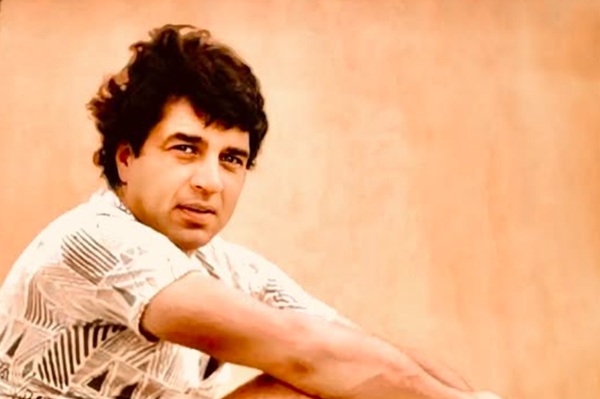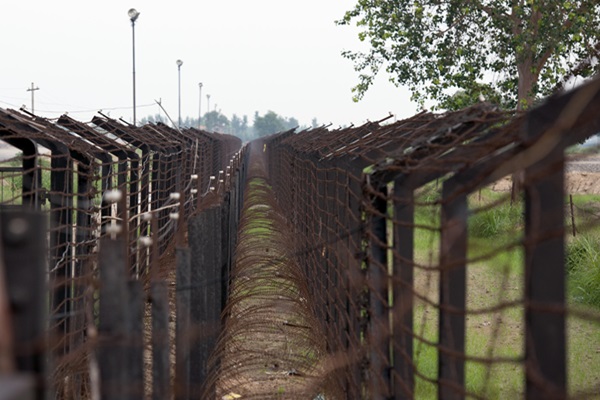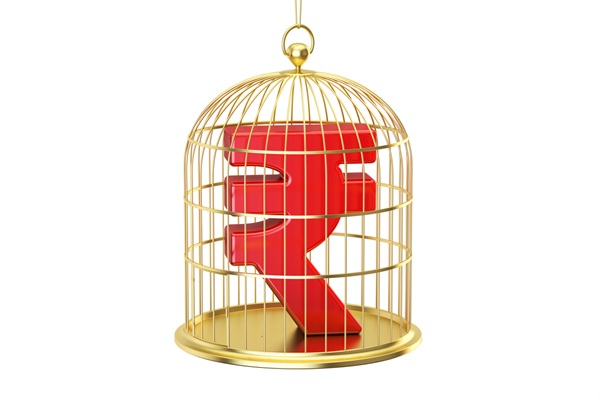.png)
The He-Man Who Cried
Dharmendra's quietest truth was also his strongest one: the He-Man who cried taught India that vulnerability is not weakness but power.


Kirti Tarang Pande is a psychologist, researcher, and brand strategist specialising in the intersection of mental health, societal resilience, and organisational behaviour.
November 25, 2025 at 7:28 AM IST
Dharmendra meant different things to different generations. To my grandmother, he was
To my cousins and me, the 90s kids who watched his films like Zalzala half-ironically and
And then, one day, we saw him cry. His eyes welled up mid-sentence, his voice cracked as if memory itself was tugging at his vocal cords. There was no shame, no hesitation.
Those tears didn't feel like a glitch in his performance; they felt like a revelation. I remember looking at my father and brother. They didn't flinch. They didn't lose respect. If anything, they leaned in closer. Because here was a man saying the quietest truth out loud: strength is a body you build; softness is a soul you reveal. And a man could carry both without breaking.
Masculinity Trap
I understand now why that moment felt like a crack in the country's emotional architecture. We grew up in a culture where boys are instructed to be "strong," as if strength is a sealed box inside the ribcage that must never leak. Fathers pass down stoicism like a manual: hold it together, don't cry, don't show.
Mard ko dard nahi hota. Every Indian boy has heard some version of "Why are you crying like a girl?" Those tears on Dharmendra's face were radical because, suddenly, this He-Man made vulnerability compatible with masculinity. He was proof that expressing emotion doesn't make a man less; it makes him more legible, more human, more whole, more endearing.
He never delivered philosophical essays about it. He didn't intellectualise softness. He simply felt: fully, publicly, unguardedly. In an era when heroes were carved like statues, he dared to be human. And that humanity did something subtle but seismic. It rewired male psychology. It told millions of men that emotion isn't leakage. Emotion is information.
Dharmendra was the rare man who carried both a fist and a trembling heart on the same stage. The man who could split a villain's jaw one minute and wipe his own tears the next. A contradiction so seamless it revealed how much masculinity is theatre, and how little of it is honesty.
Years later, when I had become a journalist, I met him at an event in a studio. He
shared a few shayaris with me. Each one softer than the last. Each one was a reminder
that sensitivity was not a side trait,it was part of his core.
That’s when I realised that we mislabelled him as "Garam Dharam." Because anger wasn't his sharpest weapon. Sensitivity was. And his sensitivity wasn't fragile. It was tactical. It made him accessible, trustworthy, and emotionally safe in a way Indian masculinity rarely permits men to be.
Even today, our workplaces reward the man who stays granite-faced in crisis. India is a culture where softness is admired in women, monetised in mothers, sanctified in saints, and punished in men. Dharmendra broke that rule simply by existing. It's time our corporate leaders do too.
Most Indian men were trained to fear their own softness. They were never taught what to do with sadness except hide it. Dharmendra broke that psychological circuit. He embodied a possibility men had never been shown. And Indian workplaces desperately need that same rewiring.
The crisis in our workplaces isn't a talent crisis; it's a masculinity crisis. We have armies of men in corner offices who have mastered power but never learned presence. Men who can negotiate billion-dollar deals but can't say, "I'm overwhelmed." Men who carry authority but rarely authenticity.
Even though we have women in corner offices, most of us are still expected to "be a man" in interactions. Masculinity has become a behavioural currency. I remember my first job interview. The programming head, a woman, looked at me and asked, "How are you going to do this job? You're so soft spoken." I didn't understand the question then. I do now.
When I joined that workplace, the truth hit me. One of my bosses, also a woman, was terror personified. I saw grown men tremble when she called their names.
But then something stranger happened. When we became close, I realised she was sweet. Caring. Empathetic. She worked hard on her "tough" image just to be accepted as a leader in a man's world. I watched her turn herself into a version of masculinity she didn't even believe in, because that was the price of authority.
That price still haunts Indian workplaces. Employees crave connection and psychological safety. This is why Indian offices are full of silent explosions, resentment, and burnout. People don't crumble from workload. They crumble from the pressure of pretending to be tougher than they are.
Emotional Blueprint
Dharmendra solved it decades ago.
Across 300 films, he played out a paradox that won him enduring affection. By the quiet confidence of a man who knew tears don't diminish you; they disclose you. When a strong man cries, the room doesn't collapse; it expands. People breathe easier. Power softens. Trust deepens.
This "co-movability" between strength and softness challenged the myth that authority requires emotional distance. And that myth is precisely what modern workplaces must dismantle. We are in an era of emotional inflation, where employees expect psychological safety. Leadership today demands emotional fluency, not emotional suppression.
Leaders fear that showing emotion will make them look weak. The result is a quiet organisational dysfunction, where teams starve emotionally while managers lock up their humanity. This avoidance strategy collapses in today's knowledge-driven world, where people carry generational trauma and digital exhaustion into every meeting.
Dharmendra did what modern leaders still struggle with—he made vulnerability look powerful. Not sentimental. Not self-indulgent. Powerful.
Modern research agrees. Emotional intelligence in leadership isn't a soft skill; it's a strategic edge. EQ-trained managers perform dramatically better. Not because they are nicer, but because they understand emotions as data—signals that reduce blind spots and let teams take risks without fear.
The benefits are visible anywhere leaders stop pretending they are made of stone. Lower attrition. Faster problem-solving. Higher creativity. Healthier workplaces. This is not softness; this is strategy.
This is the Dharmendra Model translated into leadership behaviour. A shift in emotional posture. A willingness to let the inner landscape appear.
Acknowledging team emotions during change. Sharing personal disappointments when appropriate. Rewarding openness. Building a vocabulary of emotional dialogue. And yes, making space for vulnerability when something genuinely moves you.
A leader who can be vulnerable isn't weak. He is human and therefore, relatable, trustworthy, and grounded. A leader who never cracks? That leader is not strong. He is unknowable. And people cannot follow someone they cannot feel.
Dharmendra understood this long before emotional psychology became corporate strategy. He was the protector who embraced softness. The action hero who led with empathy. The tough man who cried without shame. He didn't split strength and vulnerability into categories. He held them together like a cinematic equation: power multiplied by heart.
This is not nostalgia. This is a leadership blueprint. The old masculine model has expired. What teams want now is emotional accuracy. Leaders who are grounded but expressive. Strong but reachable. Someone who can reveal just enough of their internal life that teams feel a pulse, not a performance.
Maybe that is the legacy he leaves behind. Not just the movies. But an emotional code for leaders. A code that says: the He-Man who cried wasn't contradicting masculinity. He was completing it.
And perhaps that is the lesson for every leader reading this: vulnerability is not your weakness. It's your missing superpower. Dharmendra knew it. Our workplaces need to teach it. Today, as the country mourns him, maybe the most honourable tribute we can give is this—finally allowing ourselves to lead the way he lived. With presence. With power. With a heart that doesn't hide. With eyes that are unafraid to shine with tears.



